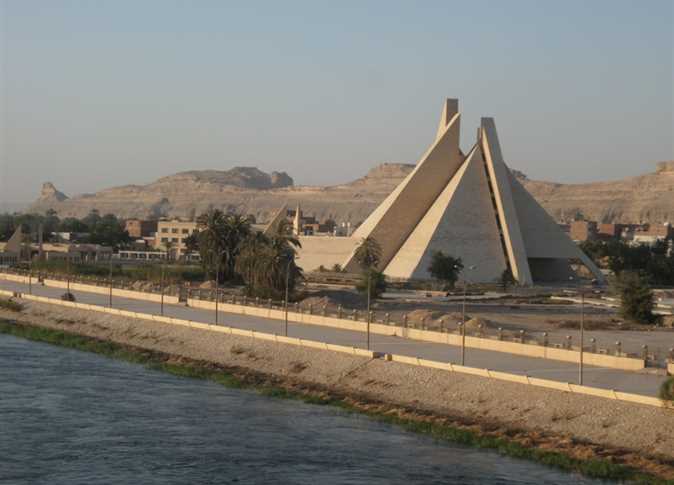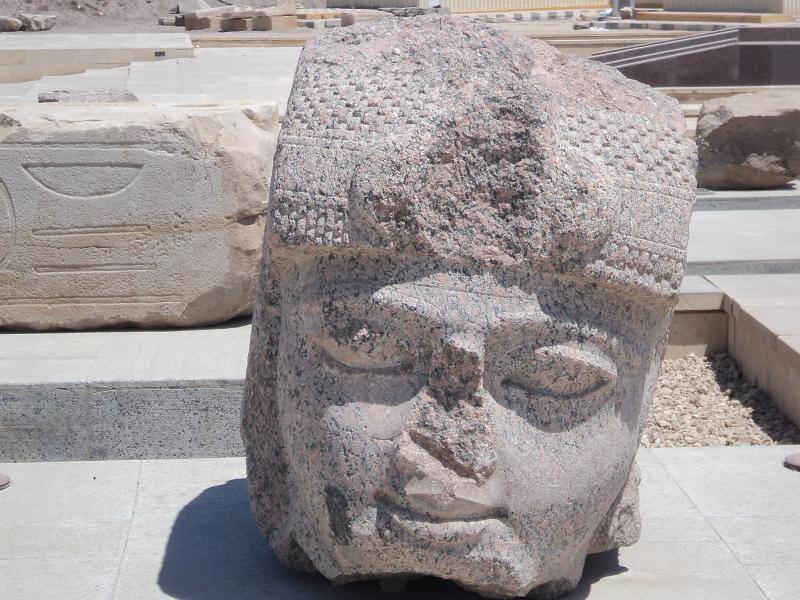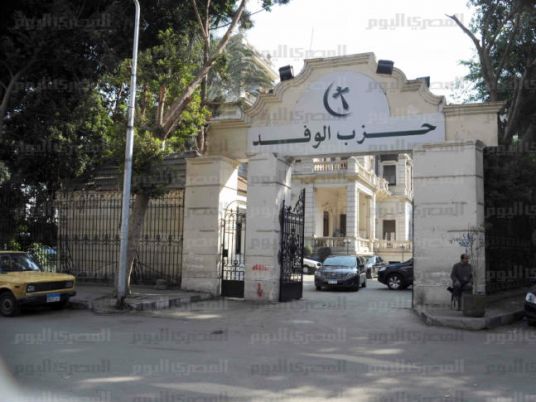Despite its being a relatively recent chapter in modern Egyptian history, the 25 January revolution has been given its own exhibition at the Pharaonic Village. A connection can be made; after all, toppled tyrant Mubarak had been frequently referred to as the “last Pharaoh,” even years before his ouster.
With that in mind, this reporter arrived at the Pharaonic Village expecting, possibly, an imposing statue of Mubarak in a nemes, his knee-high wife by his side, or maybe a hieroglyph-assisted account of the Battle of the Camels, carved into a wall and brightly-painted. Unfortunately, these unmet expectations only emphasized how much the 25 January display is, by far, one of the Pharaonic Village’s most underwhelming displays.
Limited to a single cramped warehouse and hidden in the shadow of the much larger Boat Museum, the 25 January Museum is easy to miss. There are no signs or plaques on the outside of the building identifying it as such; the only indication of its purpose being a small, uneven wooden pyramid, its sides covered with images of a small selection of martyrs.
Unfortunately, this pyramid represents the pinnacle of the exhibition’s creativity, and probably took more time to make than it did to set up the rest of the museum. Ninety-six photographs, six framed newspaper front-pages from 12 February–the day after Mubarak stepped down–and a couple of hand-written posters are divided between the exhibition’s two long walls. Palm-sized images of a few martyrs, many repeated, and a few deflated balloons hang from the ceiling. That’s pretty much it.
The far wall is dominated by either a large, eagle-less Egyptian flag, or a Yemeni one. Photographs, shared between the single-room exhibition’s two side walls, are divided into separate categories. There are pictures depicting police brutality, with uniformed and plain-clothed officers enthusiastically beating defiant protesters, as well as incriminating (and in a few cases, impressive) shots of officers firing rounds of live ammunition and teargas canisters. One particularly powerful image shows a line of state security officers hosing down a large group of protesters, kneeling in mid-prayer.
Another group of pictures show the “lighter side of the revolution,” as described by the handwritten title-card hanging above them. These images are mostly limited to pictures of Tahrir Square occupants, holding up signs with amusing slogans. “My wife is pregnant and she doesn’t want the baby to see your face — leave!” reads a sign held by a smiling young man, while another protester’s poster declares, “If I don’t take a shower in my own house tonight, I’ll take one in the presidential palace tomorrow.”
Between the photographs are a series of crudely cut, handwritten posters and banners, similar to those made and carried by Tahrir protesters, but nowhere near as inventive or witty, merely recycling broad statements of dissent, such as “The people want to bring down the regime” and of course, “Leave.” Slightly better-looking printed posters are devoted to international reactions to the revolution, with quotes from world leaders praising the Egyptian people, while another series of posters highlight noteworthy events from the revolution, such as “the Camel incident," “endless negotiations," and “the president’s long, boring and condescending speeches.”
In a corner, a single printed sheet lists the reasons behind the revolution–rigged parliamentary elections, nepotism, economic failures, corruption, the Tunisian uprising, excessive brutality carried out by the police and state-security officers, and the murder of Khalid Saeed.
While many of the exhibition’s photographs are impressive, followers of the revolution are likely to find them familiar, due to the fact that the majority of them were taken from various media sources, such as newspapers and–concerning the several screen-captured images — television news broadcasts. The remainder of the photographs come from totallycoolpix.com, as advertised by the watermark in the corner of the frames.
Considering it took little more than an internet connection, an average-quality printer, and the ability to work a search engine, it’s difficult to appreciate, or even respect, the resulting exhibition, regardless of the intention behind it. The exhibition’s supervisor claims that the 25 January Museum was still a work in progress, one that would “evolve” in the coming few months. If that’s the case, those in charge should have waited until they were ready to unveil an exhibit worthy of the revolution, or at least, on the same level as the Pharaonic Village’s other intermittently impressive displays.
While the exhibition’s photographs do trigger some emotion when viewed in such close succession, that probably has more to do with the reality and proximity of the revolution than the actual display. As it is, this 25 January Museum comes across as more of a sloppy but well-meaning amateur project than a commemoration of a truly remarkable event.




